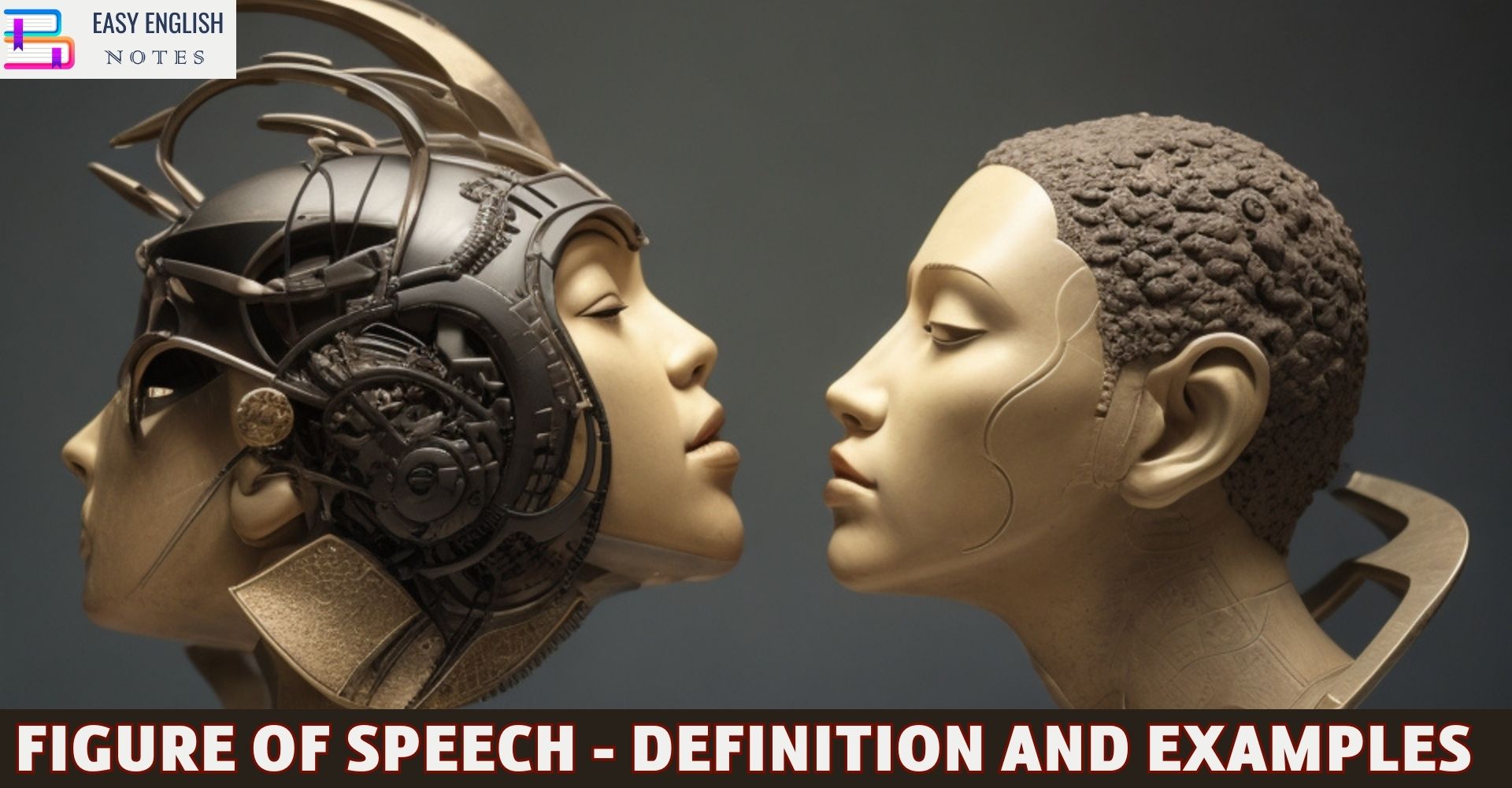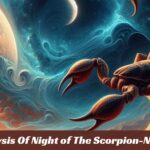(1) Simile:
A Simile (literally, a thing like) is a comparison between two persons or things that are similar in one point and are otherwise dissimilar. It is usually introduced by such words as ‘like as”.
(i) The Assyrian came down like wolf on the field.
(ii) A room without books is like a body without soul.
(iii) Red as a rose is she.
(2) Metaphor:
It is a figure of speech in which one thing is compared with another but the comparison is not formally expressed.
Example: The camel is the ship of the desert.
(3) Allegory:
Allegory is a long extended comparison in which one subject is described in great detail, while another is intended to be understood -e.g..
(i) In J. Bunyan’s Pilgrim’s Progress, the most famous allegory in English literature, the story of a journey made by the hero is really intended to be understood as a description of the life of an ordinary Christian.
(ii) Swift’s Gulliver’s Travels is also an allegory.
(4) Parable:
Parable is a short story so called because the story and its meaning are placed side by side as parallels. Examples: In the Bible there are many parables. Ten Virgins: Prodigal son, etc.
(5) Antithesis:
It consists in putting two unlike ideas against each other so that each may appear more striking than the other by contrast.
(i) Peace hath her victories no less renowned than war.
(ii) God made the country, man made the town.
(6) Heroic Couplet :
(a) It is a stanza of two lines.
(b) Both the lines are iambic pentameter.
(c) The rhyme scheme is aa
Examples:
(i) We think our father fools so wise we grow, a
Our wiser sons no doubt will think us so. a
-Pope
(ii) All human beings are subject to decay a
And when Fate summons monarchs must obey a
-Dryden
Alexander Pope and Dryden have made an effective use of this stanza form.
(7) Spenserian Stanza:
(a) It is a stanza of nine lines
(b) The first eight lines are iambic pentameter but the last line is iambic hexameter
(c) The thyme scheme is ababbebee
It is called a Spenserian Stanza because Spenser was the first to in Faerie Queene.
Example:
Roll on, thou deep and dark blue Ocean-roll! a
Ten thousand fleets sweep over thee in vain. b
Man marks the earth with ruin-his control a
The wrecks are all thy deed, nor doth remain b
A shadow of Man’s ravage, save his own. c
Stops with the shore; upon the watery main b
When for a moment, like a drop of rain b
He sinks into thy depths with bubbling groan. c
Without a grave, unknell’d uncoffin’d, and unknown! c
-Byron
(8) Sonnet:
The word ‘sonnet’ comes from the Italian word ‘sonetto’ which means a short song. It is short subjective lyrical poem of 14 iambic pentameter lines. It is divided into two parts. The first part contains 8 lines and is called octave; the second part consists of 6 lines and is called sestet. This is the structural division of Petrarchan sonnet named after its originator Petrarch, an Italian poet. The octave takes a proposition, relates an experience, gives a thought; the sestet gives some reflections on it or some conclusions drawn from it. Milton’s ‘On His Blindness’ is the best example of Petrarchan sonnet.
The Shakespearean sonnet contains four quatrains rounded off by a couplet (4 +4 +4 +2= 14). All the sonnets of Shakespeare follow this structural division.
(9) Free Verse or, Verse libre:
It is verse which, although more rhythmic than ordinary prose, written without a regular metric pattern, andusually without rhyme; e.g., Politics : W. B. Yeats.
(10) Dramatic Monologue:
When character in a drama speaks to himself or himself aloud specially when there is none to listen to, we call it Dramatic Monologue. Shakespeare’s ‘Hamlet’, ‘Macbeth’, ‘King Lear’ and ‘Othello’ abound in dramatic monologues.
(11) Paradox:
It is a statement that seems absurd at first sight and yet proves to be true on second thoughts.
1. The child is father of the man
2. Cowards die many times before their death.
(12) Climax:
It is a figure of speech which consists in a gradual ascent from a lower to a higher statement by successive steps.
(i) I came. I saw, I conquered.
(ii) Some are born great, some achieve greatness and on some greatness is thrust
(13) Anti Climax or, Bathos:
Anti Climax or Bathos is the opposite of climax consisting in descent from higher level to lesser heights the intensity or importance weakening, instead of increasing towards the end.
He lost his wife, his child, household goods, and his dog in one fell swoop of fate.
(14) Metonymy:
It is a change of name; in which a thing is called, not by its own name, but by the name of some accompaniment which suggests it.
I am basking in the sun (sun shine).
His hairs should secure him from insult (old age),
The pen (writer) is mightier than the sword (soldier).
He was ruined by his bottle (wine).
Sceptre and crown must tumble down (kings).
(15) Hypallage or, Transferred Epithet:
It is a figure of speech in which the qualifying adjective is transferred from a person to a thing:
(a) The ploughman homeward plods his weary way (The ploughman was weary and not the way)..
(b) He lay all night on a sleepless pillow.
(16) Personification:
It is the attribution of life understanding to inanimate things or abstract ideas.
(a) The sun smiled.
(b) “Death lays his icy hand on Kings”.
(c) “The world knows little of its greatest men”.
(17) Apostrophe:
It is also a special form of personification which consists in turning away from the main thread of discourse or writing in order to address a present or absent person or thing.
Remember that personification is expressed in the third person while Apostrophe is expressed in the second person.
Roll on, thou deep and dark blue Ocean, roll!
(18) Hyperbole :
It is the name applied to an extravagant statement not intended to be taken literally.
“The thousand saw I at a glance”. Wordsworth.
(19) Irony:
Irony is saying exactly the opposite of what one means though the words are not meant to be taken literally.
(i) “See how these Christians love one another”.
(ii) The doctor performed a successful operation though ten patients died under his knife.
(20) Satire:
In both prose and poetry in a wider term that either irony or sarcasm. It expresses the writer’s burning indignation at man and their doing by holding them up to ridicule and scorn. Unlike sarcasm it aims at improvement and reform rather than hurting an Epistle to Dr. Arbuthnot.
(21) Pun or, paronomasia :
It is a play on meaning of a word for the sake of humour. He passes for a man of letter without knowing a single letter.
Also Read :
- Compare Hamlet with Macbeth, Othello and other Tragedies
- “The Pardoner’s Tale” is the finest tale of Chaucer
- Prologue to Canterbury Tales – (Short Ques & Ans)
- Confessional Poetry – Definition & meaning
- Line By Line Explanation Of The Poem The Eve of St. Agnes
(22) Alliteration:
Alliteration is repeating the same sound in several words:
“After life’s fitful fever he sleeps well”. “Full fathom five thy father lie”.
(23) Onomatopoeia :
This Greek term means “a name” and “make”. In this figure the sound of word echoes the sense. The word is so formed as to resemble the sound of the thing which it suggests. Example:
(i)Break, break, break (Tennyson).
(ii) ‘O how shall summer’s honey breath hold out
Against the wreckful siege of battering days. (Shakespeare).
(24) Pindaric Ode:
A Pindaric Ode is a poem with set meter and rhyme just like all other odes. It is defined by three trads: the strophe and the antistrophe being of the same stanza form and an epode as the final which is different. This form of ode was named after the writer Pindar.
A form of ode associated with Pindar consisting of a triple unit or groups of triple units, with a strophe and an antistrophe of identical structure followed by epode of a different structure often shortened to: Pindaric. A famous example “Ode on a Grecian urn.”
(25) Pastoral Elegy:
The pastoral elegy is a poem about both death and idyllic rural life often, the pastoral elegy features shepherds. The genre is actually a subgroup of pastoral poetry, as the elegy takes the pastoral elements and relates them to expressing grief at a loss. Shelley chose the Pastoral convention for his elegy, for he had such noble examples as his precedents as Milton’s Lycidas and spenser’s Astrephc. As a pastoral elegy, adonais closely follows the classical machinery of pastoral. It may be divided into two parts. The pastoral elegy has a tradition going back to its earliest known writer Bion through Arnold, Shelley, Milton, Spencer, Petrarch, Virgil and Theocritus. The most famous example of the pastoral elegy is Lycidas, by the English poet John Milton.
(26) Romantic Ode:
The romantic ode in English literature is a poem written on the occasion of a vocational or existential crisis in order to reassert the power and range of the poet’s voice. There are three major rules that appear in nearly all romantic odes:
(i)The use of appearance of nature.
(ii) A meditation state that focuses on a particular internal issue.
(iii) A resolution which occurs as a vision, a decision, or an activity that returns the speaker of the poem back to the original scene in nature.
(27) Epic Simile or, Epical simile:
The epic simile is a figurative device first popularized by Homer in his epics. It is a comparison that may be as long as a dozen lines. An epic simile is used typically in epic poetry to intensify the heroic stature of the subject and to serve as decoration.
Example:
My grandmother’s ring brings me happiness like summer days with dew on the grass, birds chirping loudly, and days with endless sunlight- bring a child happiness.
It is an epic simile because it makes a connection and paints a picture.
(28) Ballad or, Ballad meter:
Ballad meter is a type of poetry that uses alternating lines of iambic tetrameter and iambic trimeter, with a rhyme scheme of A-B-C-B. It contains alternating iambic tetrameter & iambic trimester like “glory, glory, hallelujah…”.
Example:
O mother, mother make my bed
O make it soft and narrow
Since my love died for me today
I’ll die for him tomorrow.
(29) Rhetorical Question:
A rhetorical question is a question someone asks without expecting an answer. The question might not have an answer, or it might have an obvious answer. Sometimes these questions are asked to punch up a point. If the answer is glaringly obvious, it will make that answer stand out. Writers love to prompt further thinking and reflection. Rhetorical questions are a great way to achieve that. Leaving a question lingering in the air will allow the reader to spend further time in contemplation.
Example:
“If you prick us, do we not bleed?
If you tickle us, do we not laugh?
If you poison us, do we not die?
And if you wrong us, shall we not revenge?”
PLEASE HELP ME TO REACH 1000 SUBSCRIBER ON MY COOKING YT CHANNEL (CLICK HERE)











